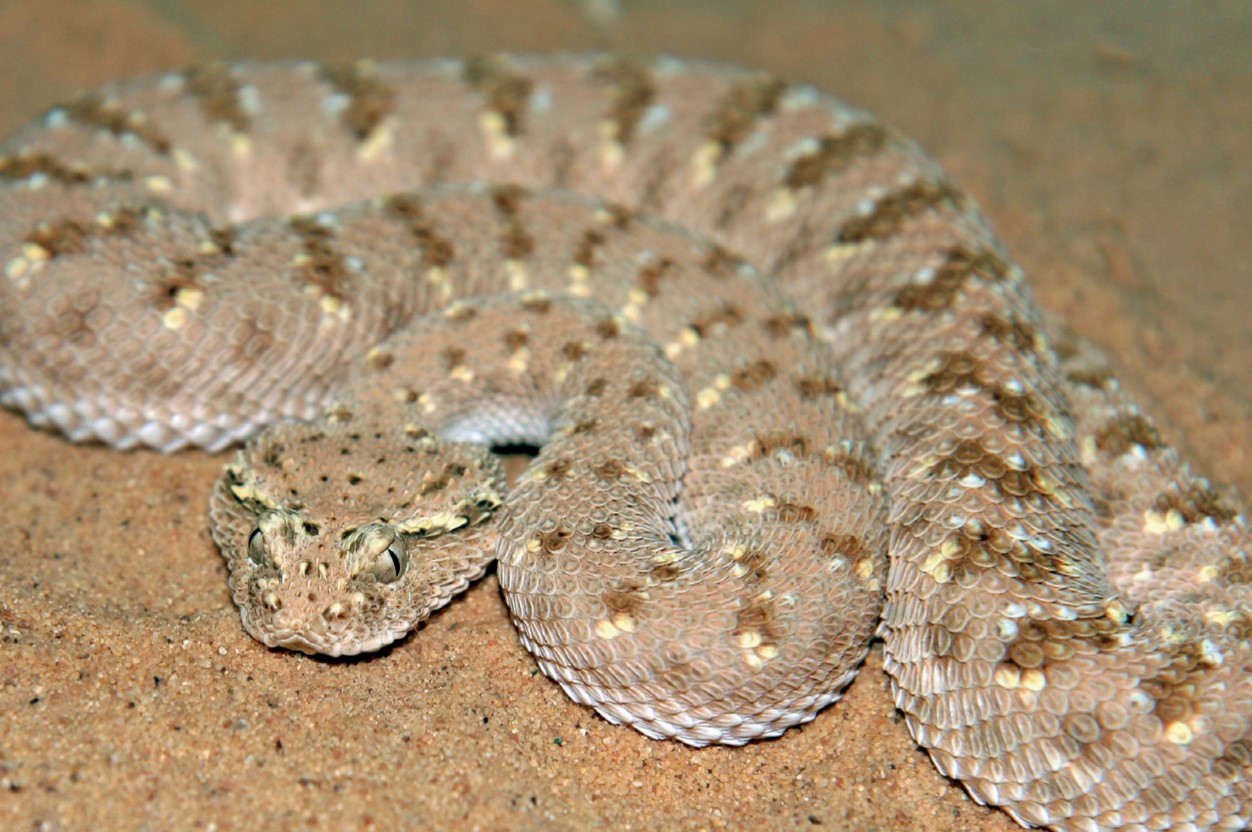
The Arabian Horned Viper is a fascinating creature that captures the imagination with its unique characteristics and striking appearance. This venomous snake, scientifically known as Cerastes gasperettii, is native to the sandy desert regions of North Africa and the Arabian Peninsula. With its horn-like scales above the eyes and perfectly camouflaged sandy coloration, it has adapted effectively to blend into its arid surroundings.
In this article, we will delve into 17 captivating facts about the Arabian Horned Viper, shedding light on its physical features, behavioral traits, and ecological significance. Whether you are a snake enthusiast, a nature lover, or simply curious about the wonders of the animal kingdom, these intriguing facts will provide a deeper understanding of this incredible serpent and its role in the delicate balance of its ecosystem.
Key Takeaways:
- The Arabian Horned Viper is a fascinating snake found in the deserts of the Arabian Peninsula, known for its unique horned appearance, venomous bite, and remarkable adaptations for survival.
- These vipers are ambush predators, using their camouflaged bodies to silently wait for prey, making them a captivating subject for both snake enthusiasts and researchers.
Unique Horned Appearance
The Arabian Horned Viper, also known as the Cerastes gasperettii, gets its name from the distinctive horn-like scales above its eyes, giving it a unique and menacing appearance.
Native to the Arabian Peninsula
The Arabian Horned Viper is found exclusively in the desert regions of the Arabian Peninsula, including Saudi Arabia, Yemen, Oman, and the United Arab Emirates.
Exceptional Adaptability
These vipers have evolved remarkable adaptations to survive in harsh desert environments, such as sand-colored scales for camouflage and the ability to go without water for extended periods of time.
Venomous Fangs
The Arabian Horned Viper possesses highly specialized venomous fangs that allow them to inject potent toxins into their prey, aiding in both hunting and defense.
Ambush Predators
Arabian Horned Vipers are ambush predators, using their camouflaged bodies to lie in wait for small mammals, lizards, and birds to pass by before striking with lightning-fast speed.
Venomous Bite
If bitten by an Arabian Horned Viper, it is essential to seek immediate medical assistance. Their venom can cause severe pain, tissue damage, and potentially even death if left untreated.
Breeding Behavior
During the breeding season, male Arabian Horned Vipers engage in combat to compete for females. They engage in a wrestling match, trying to overpower their opponent by intertwining their bodies.
Viviparous Reproduction
Arabian Horned Vipers give birth to live young, rather than laying eggs. The females carry the developing embryos inside their bodies until they are ready to be born.
Variable Length and Coloration
Arabian Horned Vipers can reach lengths of up to 2 feet, with males generally being smaller than females. They display various colorations ranging from shades of yellow, brown, and gray.
Nocturnal Creatures
These snakes are primarily nocturnal, preferring to hunt and move during the cooler hours of the night when the desert temperatures are more bearable.
Thermal Sensing Abilities
Arabian Horned Vipers have specialized pits on their heads called loreal pits, which can detect infrared radiation and help them locate warm-blooded prey even in complete darkness.
Long Lifespan
These vipers have a relatively long lifespan compared to other snake species, with some individuals living up to 20 years in the wild.
Cultural Significance
The Arabian Horned Viper holds cultural significance in the region, often depicted in artwork, jewelry, and traditional folklore of the Arabian Peninsula.
Conservation Concerns
Due to habitat loss, fragmentation, and overcollection for the pet trade, the Arabian Horned Viper is facing increasing conservation concerns and is listed as a vulnerable species.
Dietary Habits
Arabian Horned Vipers primarily feed on rodents such as mice and rats, as well as small birds and lizards, using their venomous bite to subdue their prey.
Shedding Skin
Like all snakes, Arabian Horned Vipers regularly shed their skin, allowing for growth and maintaining optimal functioning of their scales.
Silent Slitherers
These vipers move silently through the sand, using their scales and specialized body structure to minimize noise and remain almost completely undetectable.
These are just a few of the captivating facts about the Arabian Horned Viper, a fascinating and unique species that thrives in the arid deserts of the Arabian Peninsula. Their horned appearance, venomous bite, and remarkable adaptations make them an intriguing subject of study for both snake enthusiasts and researchers.
Conclusion
In conclusion, the Arabian Horned Viper is a truly fascinating creature. With its unique characteristics and adaptations, it stands out among its reptilian counterparts. From its striking appearance to its venomous bite, this viper has captured the curiosity of many researchers and wildlife enthusiasts.Learning about the Arabian Horned Viper not only sheds light on its amazing abilities but also highlights the importance of preserving its natural habitat. As with any species, it plays a crucial role in maintaining the balance of its ecosystem.Exploring the intricacies of the Arabian Horned Viper reveals just how diverse and awe-inspiring the animal kingdom can be. By understanding and appreciating these creatures, we can cultivate a deeper appreciation for the wonders of nature.
FAQs
Q: What is the size of an Arabian Horned Viper?
A: Adult Arabian Horned Vipers typically measure between 60 to 90 centimeters in length.
Q: Where are Arabian Horned Vipers found?
A: Arabian Horned Vipers are native to the arid regions of North Africa and the Arabian Peninsula.
Q: Are Arabian Horned Vipers venomous?
A: Yes, Arabian Horned Vipers possess venom-filled fangs which they use to incapacitate their prey.
Q: What do Arabian Horned Vipers eat?
A: These vipers primarily feed on small rodents, birds, and lizards.
Q: Can Arabian Horned Vipers climb?
A: Yes, Arabian Horned Vipers are agile climbers and can easily navigate rocky terrain.
Q: Are Arabian Horned Vipers endangered?
A: While there is no specific conservation status for the Arabian Horned Viper, habitat destruction and illegal collection for the pet trade pose threats to their population.
Q: Do Arabian Horned Vipers have any predators?
A: Predators of the Arabian Horned Viper include birds of prey and some larger mammalian carnivores.
The Arabian Horned Viper's captivating characteristics make it a fascinating creature to learn about. If you're curious about other venomous snakes, our article explores the world's most dangerous serpents. For those interested in desert wildlife, check out the extraordinary facts about The Living Desert Zoo and Gardens. Aspiring herpetologists can dive into the study of reptiles and amphibians with our captivating article on the subject.
Was this page helpful?
Our commitment to delivering trustworthy and engaging content is at the heart of what we do. Each fact on our site is contributed by real users like you, bringing a wealth of diverse insights and information. To ensure the highest standards of accuracy and reliability, our dedicated editors meticulously review each submission. This process guarantees that the facts we share are not only fascinating but also credible. Trust in our commitment to quality and authenticity as you explore and learn with us.


